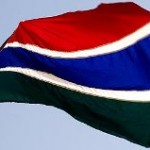 This article has originally been published online on the Africa Fashion Guide web site, and is republished with permission.
This article has originally been published online on the Africa Fashion Guide web site, and is republished with permission.
By: Jacqueline Shaw, @JacquelineMShaw, Founder Africa Fashion Guide (AFG), and Donalea Scott
In December 2011, I visited the Gambia for the first time along with AFG Guest Contributor Donalea Scott of GetAPerspective blog. And I was highly open minded, very expectant and excited too. I profess to be having a growing love affair with Africa that I don’t wish to end right now as I am having fun finding out about the jewels and the hidden secrets this beautiful continent has to offer.
From the moment I stepped off the plane to seeing the red soil, the green nature, the welcoming smiles, I knew I was in Africa – the true Motherland. The smiling coast lived up to its name for sure and the sunshine … What can I say!
My focus was to engage with those who were involved in the textile industry however big or small as well as to learn more about the heritage and the culture and the history of the country.
The Gambia is the smallest country on the African continent, though it surely does not lack any slender or rich history. A former British colony, Gambia played an important role in the slave trade; the River Gambia was used as a hub for the exporting of African slaves, first controlled by the Portuguese from 1456, then by the British from 1661. Gambia won its independence from the British in 1965 and has since been political relatively stable.
The country is filled with happy and friendly locals, with my coach transfer to and from the airport greeted with kind waves from the local people. Tourism is said to be Gambia’s biggest industry, though I don’t think this alone is the reason for their friendliness, we found the Gambia people to exhibit much pride in their country, culture and a contentment for their lifestyle.
Gambia is a Muslim country with the population said to be 70% Muslim and only 30% Christian. Though unlike stories I’ve heard of Arab countries such as Dubai, said to be somewhat intolerant to the behaviours of western tourists, Gambia is welcoming and very accommodating.
Staying in the Senegambia region, a popular tourist destination due to its nightlife, bars and restaurants, I was impressed to find out that these facilities were also used by the locals, particular the clubs. Though interestingly, since much of the youngsters are Muslim, not drinking and smoking doesn’t affect their ability to have fun. Music is very important to Gambian youths: they appreciate their traditional music as well as having an interest in international offerings. Then again to my surprise, it’s not pop or hip-hop that they are crazy for, but the conscious sounds of old school Jamaican reggae. And I mean ‘old skool’, the type of records I remember my parents playing in my childhood. It was amazing to see music make such a positive impact, to know that the message laden music of reggae can transgress culture, language and religion.
We found out the hard way that one week wasn’t enough time to visit the country, though I managed to cram a lot into my short stay. We visited the capital Banjul, Serekunda Gambia’s largest city, Bakau and its crocodile park, Dippa Kunda the batiking district, Tanje a fishing district and home of one of the many museums we visited, and of course Jaffureh, a small town whose history is tied with the slave trade.
The museums sadly were not well funded yet they contained some of the most interesting and amazing artefacts that we have ever seen. In all Donalea’s years of researching into slavery she was presented for the first time face to face with whips, branding irons, shackles and neck chains that were used during the slave trade, and was told facts about slavery that books would never share (such as local Africans resistance to the taking of its people, a historical inaccuracy!). We also visited James Island, a small island situated in the Gambia River where the British had a holding fort to house slaves awaiting the journey on the middle passage. Overall it was an extremely emotional experience since we are both of Caribbean descent therefore our lineage is inevitability tied to this destructive historical event.
Weaving
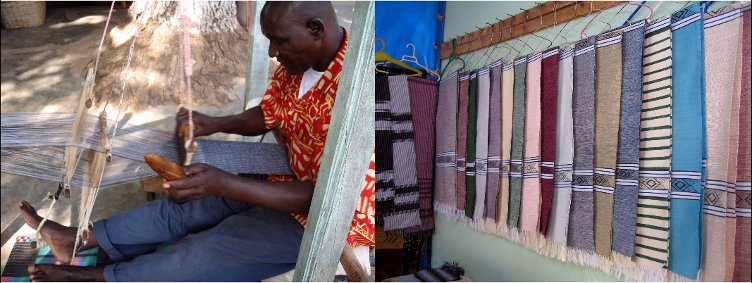
On delving deeper into the source of the materials, he tells us that he used to be able to source the cotton yarn locally from The Gambia, but as his seller is no longer able to obtain it himself, it complicates matters substantially when trying to source it The Gambia at present. The main source has been Senegal for the cotton which is from a Senegalese cotton farm and is also processed in a factory in Senegal.
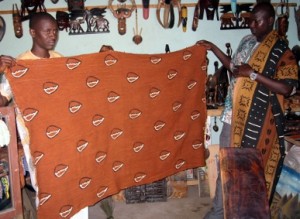
I enquire more about local textiles as a tradition, asking who is doing it now and the weaver tells us: "it would be better to have a factory ... there used to be lots of people doing it but it is very hard work. You sit all day long doing it and once its done for an order, people don’t always buy it. So more people stopped doing it." He says that "sometimes yes it is boring" but he is used to it now.
Weaving is not only a great art form but a labour intensive craft in the aspect that it can take 3 hours of labour to weave a 1.30m piece, which is just enough for a scarf. Though he doesn’t work on a Friday as he is a Muslim and its a religious day, he still puts a lot of hours into this craft. I wonder if it is a growing or a dying craft, and he tells us that while has been weaving since he was a child at school, his sons don’t want to learn and he doesn’t want to force them. The problem is when he dies so does the skills too. “If there was more business then more people would do it ” he stresses.
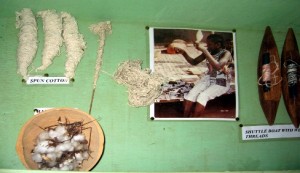
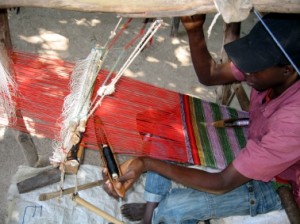
Embroidery
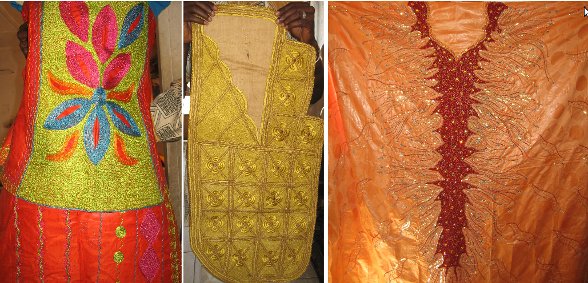
When it comes to customers and getting new business, Alagie and his trainee tailors will wait for them to pass by or call in, and he tells us that he can get sometimes 5 or 10 or more customers a week. When it is Eid or another festival period, it is very busy and they only get around 3 hours sleep a day.
Many customers will pay cash which is important for the business to run and be sustainable. Alagie and other tailors need cash up front in order to buy the materials required for their orders. This may be why it can take two weeks to make something when they say they can do it in 2 days. He tells us also that many people will come to order only the day before they need the garment, meaning all the resources are put to use straight away. Also for the business to run well they tend to primarily focus on their regular customers, as they will pay on time and so they will make more time for them as opposed to the passer-by customers.
The sequin piece shown is an amazing creation – in my eyes – piece of art. Alagie will draw the original design or even make one up, and then a group of women who work for him will repeat the design and sew the garment together. As expected, the beads are sourced from China or India; also, many suppliers will go to Dubai and bring the beads back. Such large embroidered pieces are made for events like Eid or naming ceremonies etc. In my opinion it would give for a great wedding dresses.
Batik
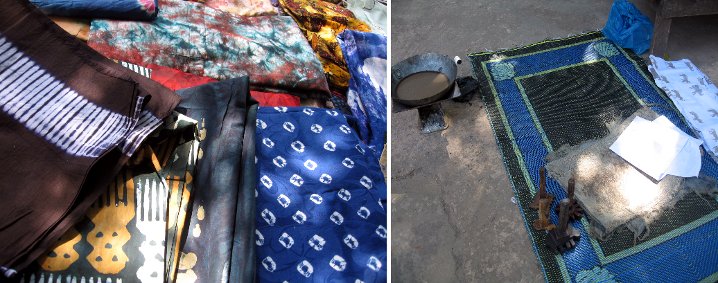
On enquiring, we understand that the batik dyes are from the USA. According to research at the Tanje Museum, originally the dyes were obtained from the soot that accumulates on clay or metal pots used for cooking food. The soot was scraped off, mixed with water and the solution used to dye clothes. From this process the present techniques of dye making developed later on. As a lover of crafts and having visited batik printers previously – I even made my own wax print batik fabric – I, of course, decide to purchase a piece that I feel sums up me and my natural afro – a lovely piece with the afro combs.
Second-hand Clothing
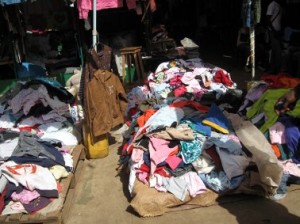
This has definitely raised more discussion and we will continue to report on.

